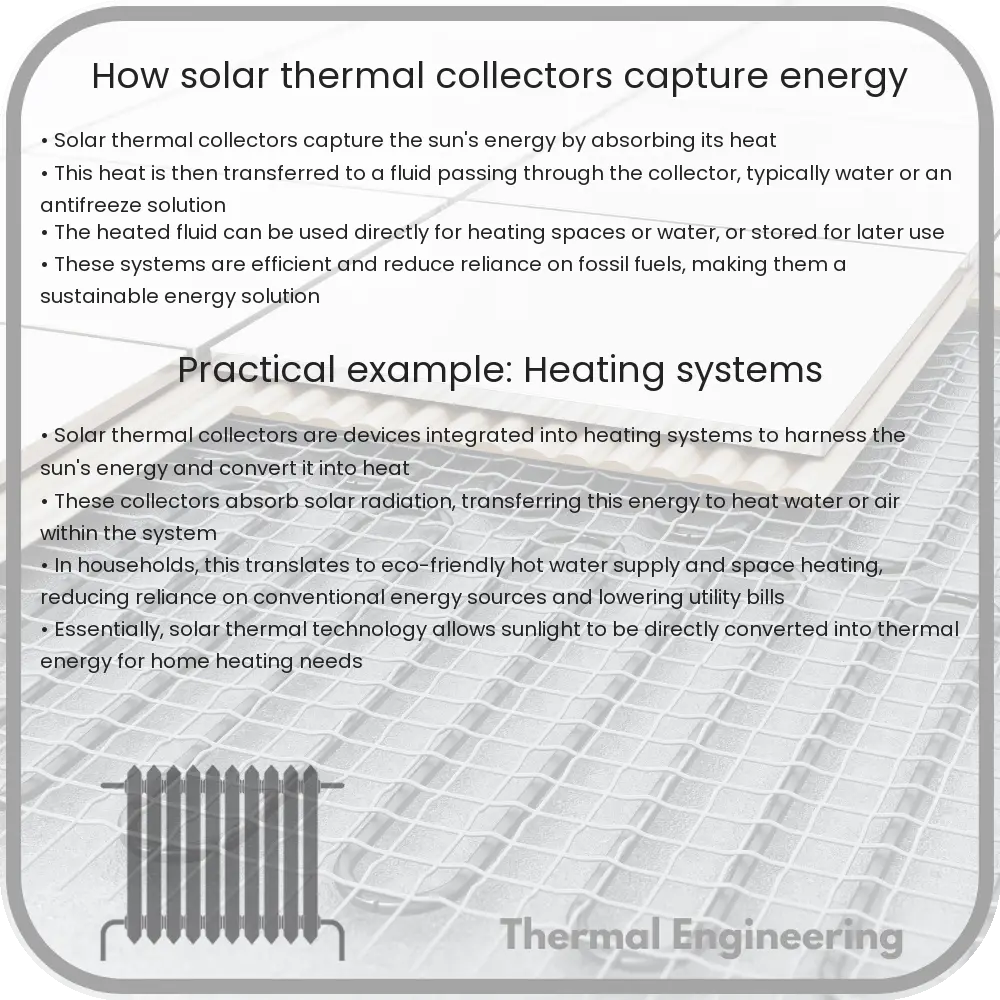Learn how solar thermal collectors capture and convert solar energy into heat for a variety of uses, including heating, electricity, and more.

How Solar Thermal Collectors Capture Energy
Solar thermal collectors are devices designed to collect and convert solar energy into heat. This technology plays a crucial role in harnessing the sun’s power for practical applications like heating water, space heating, and even generating electricity. Understanding how these collectors work is essential for appreciating their efficiency and versatility.
Types of Solar Thermal Collectors
There are generally three main types of solar thermal collectors: flat-plate collectors, evacuated tube collectors, and concentrating collectors. Each type is suited to different applications and operating conditions.
- Flat-Plate Collectors: These are the most commonly used type of solar thermal collectors. They consist of a dark flat-plate absorber, a transparent cover, a heat-insulating backing, and a fluid passage way to remove the heat from the absorber.
- Evacuated Tube Collectors: These collectors feature several glass tubes, each containing an absorber strip to which a heat transfer fluid is circulated. The vacuum within the tubes minimally reduces heat loss, enhancing their efficiency.
- Concentrating Collectors: These collectors use mirrors or lenses to concentrate sunlight onto a small, highly absorptive area. This allows them to reach higher temperatures but requires direct sunlight to function effectively.
Principle of Operation
The basic principle behind solar thermal collectors is the greenhouse effect. Solar radiation passes through a transparent cover and strikes the absorber plate, which is typically painted black to maximize heat absorption. The absorber converts solar radiation into heat, which is then transferred to a fluid passing through tubes attached to the absorber plate.
The heat transfer fluid, often water or an anti-freeze liquid, absorbs the heat and transports it away from the collector for immediate use or storage. In systems designed for higher temperatures, synthetic oils or molten salts can be used as the heat transfer fluid.
Energy Capture and Conversion
The efficiency of solar thermal collectors is significantly affected by several factors:
- Absorption: The effectiveness of the absorber material in converting incident solar radiation into heat.
- Insulation: The quality of the thermal insulation at the back and sides of the collector, which minimizes heat loss.
- Transmission: The transmission capacity of the collector’s cover that allows solar energy to pass while also minimizing heat loss.
Typically, the absorbed solar radiation is converted into heat with an efficiency of 50-70%, depending on the collector design and environmental conditions.
Applications of Solar Thermal Energy
Solar thermal collectors have a wide array of applications, ranging from domestic to industrial uses:
- Domestic Water Heating: Used in residential settings to provide hot water.
- Space Heating: Integrated into a building’s heating system to provide supplemental heat.
- Industrial Process Heat: Used in industries requiring thermal energy at lower temperatures.
- Concentrated Solar Power (CSP): Utilized in generating electricity at a larger scale by using concentrated solar heat to produce steam, driving turbines connected to generators.
Understanding the mechanism of energy capture by solar thermal collectors shows us the potential of solar power as a sustainable energy source. With ongoing advancements in thermal storage and collector efficiency, solar thermal technology holds a promising place in the future energy landscape.